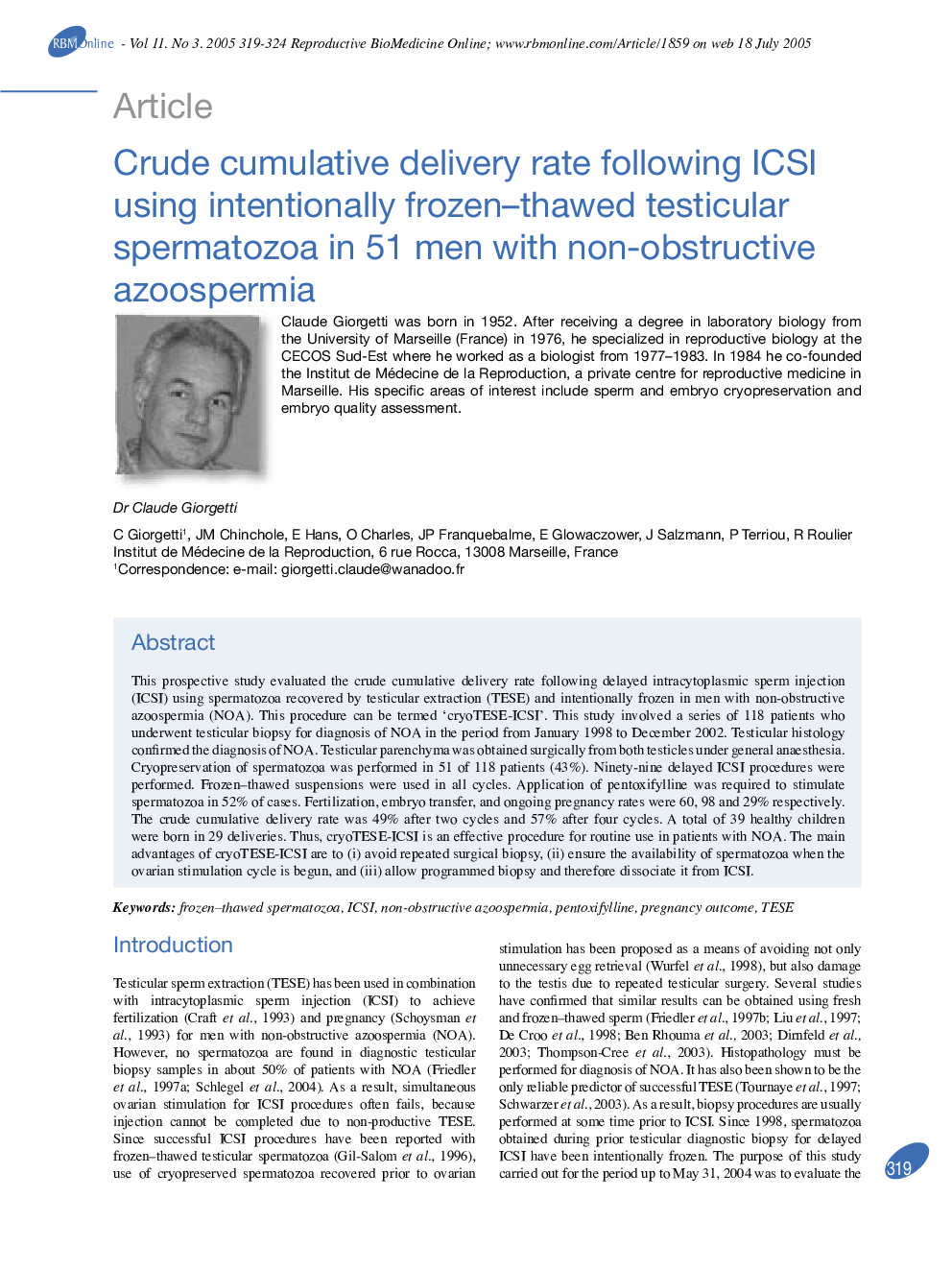| Article ID | Journal | Published Year | Pages | File Type |
|---|---|---|---|---|
| 9334688 | Reproductive BioMedicine Online | 2005 | 6 Pages |
Abstract
This prospective study evaluated the crude cumulative delivery rate following delayed intracytoplasmic sperm injection (ICSI) using spermatozoa recovered by testicular extraction (TESE) and intentionally frozen in men with non-obstructive azoospermia (NOA). This procedure can be termed 'cryoTESE-ICSI'. This study involved a series of 118 patients who underwent testicular biopsy for diagnosis of NOA in the period from January 1998 to December 2002. Testicular histology confirmed the diagnosis of NOA. Testicular parenchyma was obtained surgically from both testicles under general anaesthesia. Cryopreservation of spermatozoa was performed in 51 of 118 patients (43%). Ninety-nine delayed ICSI procedures were performed. Frozen-thawed suspensions were used in all cycles. Application of pentoxifylline was required to stimulate spermatozoa in 52% of cases. Fertilization, embryo transfer, and ongoing pregnancy rates were 60, 98 and 29% respectively. The crude cumulative delivery rate was 49% after two cycles and 57% after four cycles. A total of 39 healthy children were born in 29 deliveries. Thus, cryoTESE-ICSI is an effective procedure for routine use in patients with NOA. The main advantages of cryoTESE-ICSI are to (i) avoid repeated surgical biopsy, (ii) ensure the availability of spermatozoa when the ovarian stimulation cycle is begun, and (iii) allow programmed biopsy and therefore dissociate it from ICSI.
Keywords
Related Topics
Health Sciences
Medicine and Dentistry
Obstetrics, Gynecology and Women's Health
Authors
C Giorgetti, JM Chinchole, E Hans, O Charles, JP Franquebalme, E Glowaczower, J Salzmann, P Terriou, R Roulier,
